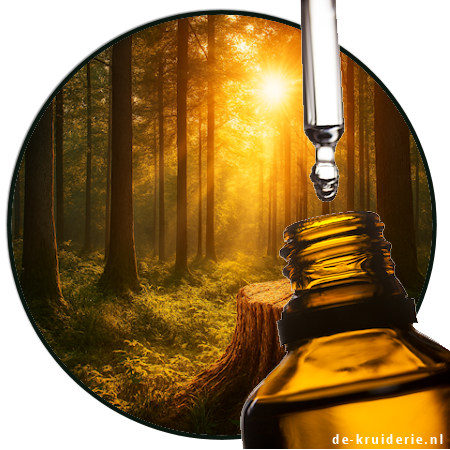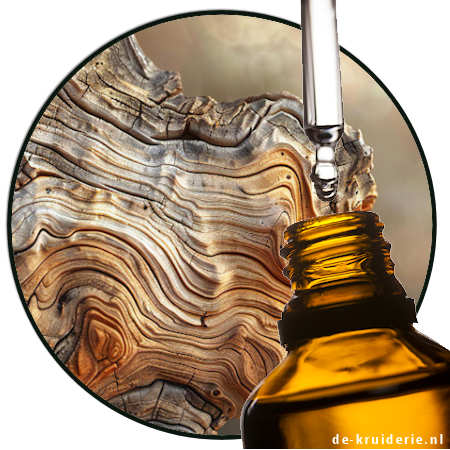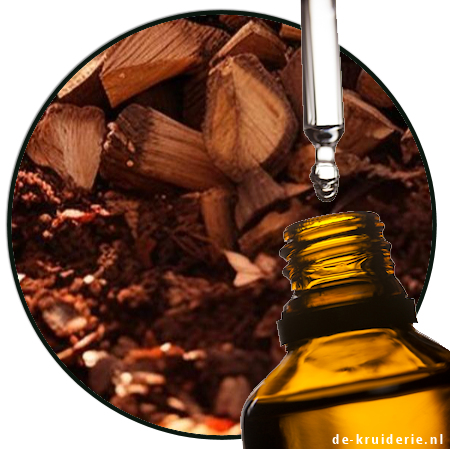

Sandal cyclopropane – (Java Sandalwood) AC
(Javanol substitute)
CAS number: 198404-98-7
Chemical family: Cyclopropyl alcohol derivative
Synonyms: Java Sandalwood, Javanol 8754013
Scent: Intense woody, sandalwood-like with tropical, creamy, slightly floral nuances.
Strength: Very powerful and diffuse, even in low concentrations
Comparison: Gives a more modern, brighter version of classic sandalwood
Sandal cyclopropane: a tropical-fresh sandalwood stunner that gives perfumes power and modern warmth.
1st Class Quality Products
All fragrances are selected with care
Delivery from stock
We supply everything from our own stock, unless otherwise stated on the product itself.
Use in perfumery
- Application:
- Base note in woody and oriental perfumes
- Amplifier of sandalwood chords
- Adds volume and diffusion to floral and cologne compositions
- Dosage: Often in low percentages (<1%) due to high intensity.
Fragrance profile of Sandal cyclopropane
First Impression (Top)
- Fresh and bright: an unexpected cologne-like freshness that distinguishes the molecule from traditional sandalwood.
- Floral hint: light hints of rose and tropical flowers, giving it not only a woody but airy feel.
Heart (Middle)
- Creamy sandalwood: the core of the fragrance is warm, soft and milky, similar to natural sandalwood but with more intensity.
- Tropical-woody: an exotic nuance reminiscent of sun-drenched wood and a hint of coconut fat.
- Spicy accents: subtly peppery and slightly dry, making the character more complex and less linear.
Base (Drydown)
- Deep and long-lasting: the fragrance remains extremely long-lasting, even in low doses.
- Balsamic and leathery: an undertone of leather and patchouli-like earth gives firmness and depth.
- Diffusion: Sandal cyclopropane is known for its enormous projection; a drop can fill an entire composition.
Fragrance character in perfumery
- Modern alternative to sandalwood: where natural sandalwood is warm and subtle, Sandal cyclopropane brings a powerful, fresh and tropical dimension.
- Combinations: works beautifully with floral accords (rose, jasmine), as well as spicy notes (cardamom, pepper) and fresh citrus.
- Role in compositions: often used as a base note that gives a perfume structure and volume, but also as a bridge between fresh top notes and deep wood bases.
In summary:
Sandal cyclopropane is a powerful sandalwood molecule that gives perfumes a tropical-romantic, fresh-floral and peppery-woody dimension.
It has both playful and professional uses: a molecule that translates the classic warmth of sandalwood into a modern, sparkling signature.
Aromachemicals with a similar fragrance profile to Sandal cyclopropane (Javanol) are mainly synthetic sandalwood molecules such as Javanol, Polysantol, Bacdanol, Ebanol, Firsantol, Sanjinol and Okoumal.They share a woody, creamy, sandalwood-like character with nuances of florality or balsamic warmth.Comparable sandalwood aromachemicals
High-impact molecules
- Javanol (CAS 198404-98-7) – extremely powerful, creamy sandalwood with fresh, floral nuances.
- Polysantol – elegant, warm sandalwood, slightly softer and less diffuse.
- Bacdanol – creamy, soft sandalwood, often used as a base in modern perfumes
Creamy and floral varieties
- Ebanol – woody, creamy, slightly floral; gives depth and fixation.
- Firsantol – fresh, bright sandalwood, with a cologne-like touch.
- Sanjinol – similar to Bacdanol, but depending on manufacturer different name
Related woody molecules
- Okoumal – woody, balsamic, with spicy undertones; often used as a fixative.
- Sandalore – a classic synthetic sandalwood molecule, less powerful but warm and soft.
- Isocyclocitral – fresh-woody, less creamy, but related in diffusion.
Smell character
- All of the above molecules have a sandalwood-like profile: warm, creamy, woody, often with floral or spicy nuances.
- Sandal cyclopropane/Javanol is distinguished by its extreme strength and freshness, which is why it is often used in very low doses (<0.1%).
- Molecules such as Polysantol and Bacdanol are softer and rounder, ideal for a more subtle sandalwood accord.
Comparison Chart
Name Aroma Profile Strength / Diffusion Use / Application Javanol Extremely powerful, creamy sandalwood with fresh floral touch Very high Main molecule in modern sandalwood accords Polysantol Elegant, warm sandalwood, slightly softer and less diffuse High Luxurious wood base, combines well with florals Bacdanol Creamy, soft sandalwood, comfortable and round Medium Basic building block in modern perfumes Sandal Cyclopropane Tropical, creamy, fresh woody with floral and cologne nuances Very high Alternative to Javanol; powerful and versatile in modern wood chords Ebanol Woody, creamy, slightly floral; gives depth and fixation Medium Fixative and depth giver in floral and woody perfumes Firsantol Fresh, clear sandalwood with cologne-like freshness Medium Ideal for fresh wood accords and colognes Sanjinol Similar to Bacdanol; depends on manufacturer Medium Alternative to Bacdanol; test batch specific Okoumal Woody, balsamic with spicy undertones Low-medium Fixative in woody and amber perfumes Sandalore Classic synthetic sandalwood; warm, soft, friendly Medium Affordable base for sandalwood character Isocyclocitral Fresh-woody, less creamy but good diffusive Medium Lightens creamy wood tones, gives freshness 💡 Tips for use in perfumery
- Sandal Cyclopropane is an excellent choice for modern wood accords with a tropical, fresh and creamy character. Use in low doses (0.05-0.5%) due to high impact.
- Combine Javanol or Sandal Cyclopropane with floral notes (such as rose or jasmine) for a radiant, long-lasting wood base.
- Use Polysantol, Bacdanol or Sanjinol as creamy base components in soft, elegant perfumes.
- Add Ebanol for depth and fixation; Firsantol for freshness and brightness.
- Okoumal and Sandalore are ideal as supporting fixatives in woody and amber compositions.
- Isocyclocitral is useful to lighten heavy wood tones and give a fresh elevator to the whole.
Technical Data Sheet (TDS).
Product: Sandal Cyclopropane
CAS Number: 198404-98-7
FEMA Number: 4776
Chemical Name: [1-Methyl-2-(1,2,2-Trimethyl-Bicyclo{3.1.0}-Hex-3-ylMethyl)-Cyclopropyl]-Methanol
Molecular Formula: C₁₅H₂₆O
Molecular Weight: 222 g/mol
Olfactive Description
- Rich, natural, creamy sandalwood note
- Subtle rosy nuances
- Low odor threshold → impactful even at trace levels
- Absence of double bond → exceptional stability & performance
Perfumery Usage
- Adds creaminess and sandalwood nuance to accords
- Used in fine fragrances, shampoos, shower gels, soaps, detergents, softeners, candles
- Typical usage levels: traces to 2% depending on application
Renewable Carbon
- >65% renewable carbon content
Physical & Chemical Properties
| Property | Value |
|---|---|
| Appearance | Colorless to pale yellow viscous liquid |
| GC Purity | ≥ 90% (sum of isomers) |
| Flash Point | > 100 °C |
| Boiling Point | 270.4 °C |
| Log P | 4.8 |
| Acid Value | < 1 |
| Solubility | 1.1 w/w in 80% ethanol |
Application Levels (Indicative).
| Product Type | Typical Usage Level (%) |
|---|---|
| Fine Fragrances | + (trace to 2%) |
| Shampoo | 6 |
| Shower Gel | 6 |
| Soap | 9-10 |
| Detergent | 7 |
| Fabric Softener | 6 |
| All-Purpose Cleaner | 9 |
| Candle | 8 |
Example Sandalwood Accord
| Ingredient | % |
|---|---|
| Sanflore | 10.0 |
| Lokanol (Sandal Cyclopropane) | 1.0 |
| Sandol | 4.0 |
| Mysosan | 4.0 |
| Sabanol | 2.0 |
| Iso Bornyl Cyclohexanol | 3.0 |
| Patchouly | 0.3 |
| Cedarwood Oil | 3.0 |
| PTBCHA | 2.0 |
| Coumarin | 0.2 |
| Vanillin | 0.1 |
| Musk Xylol | 0.2 |
| Musk Ketone | 0.1 |
| Heliotropin | 0.1 |
| DEP (Diethyl Phthalate) | 70.0 |
| Total | 100.0 |
Tenacity on Blotter
- <1 hr → Light perception
- 3-10 hrs → Moderate persistence
-
3 days → Long-lasting drydown
- Diffusivity: Blooming, strong projection
- Burning properties: Stable in wet & dry applications












